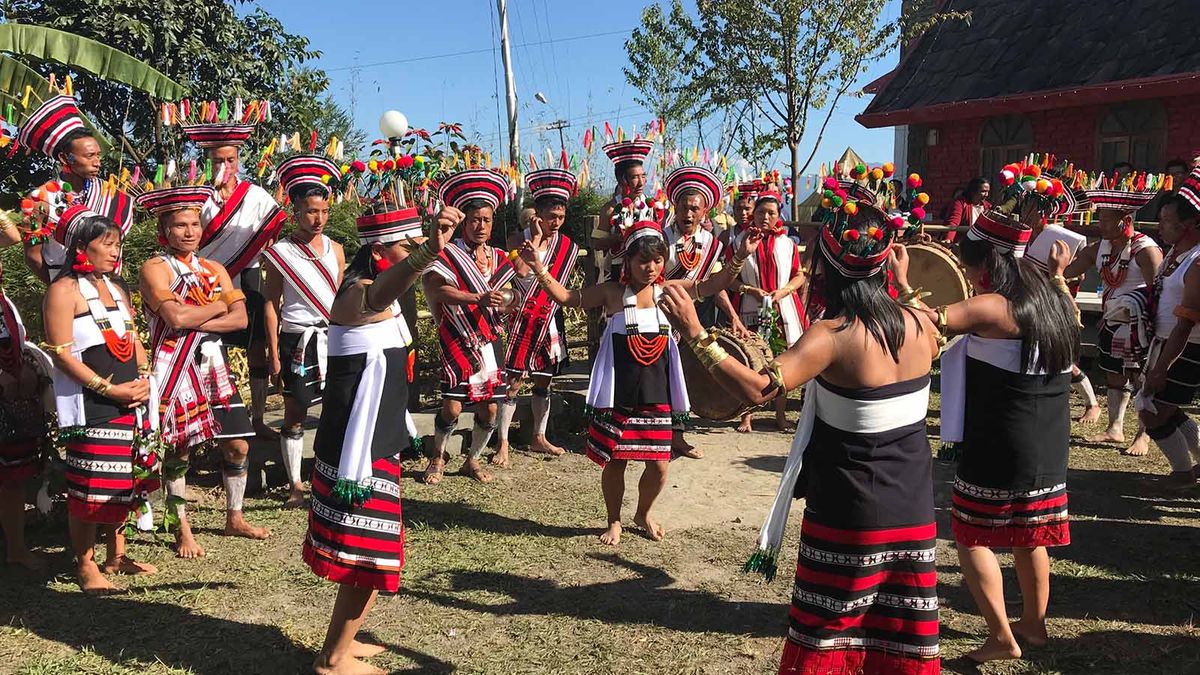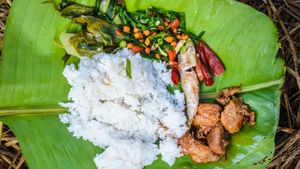It seemed as if every moment was of blissful forgetfulness in an otherwise hurried world; every moment making me richer with memories and bliss. The melange of colours and cultures of the Hornbill Festival in Nagaland and the thrill of a minimalistic tent being my abode at ground zero for a few days brought out the child within. And the days that followed ensured I had no dreary minute to regret.
As the stark difference in day and night temperatures at Kisama Heritage Village in the hills of Kohima, amazed me, sleeping bags became synonymous with devilishly cold nights of ordeal for the city girl in me. Lying awake, listening to the sound of the wind and the rattling of leaves, I might have been cold, but the soul seemed to have blended with those whispers of nature.
The rising sun resulted in a stirring effect in spirits. Makeshift toilets and bathrooms became experiences to cherish, and a quick breakfast everyday gave way to hours of roaming around in the morungs (traditional dormitories of various Nagaland tribes assembled in the village for the festival), appreciating their attires, savouring their food and drinks, and merrily chatting and dancing with them.
Meeting the tribes of Nagaland
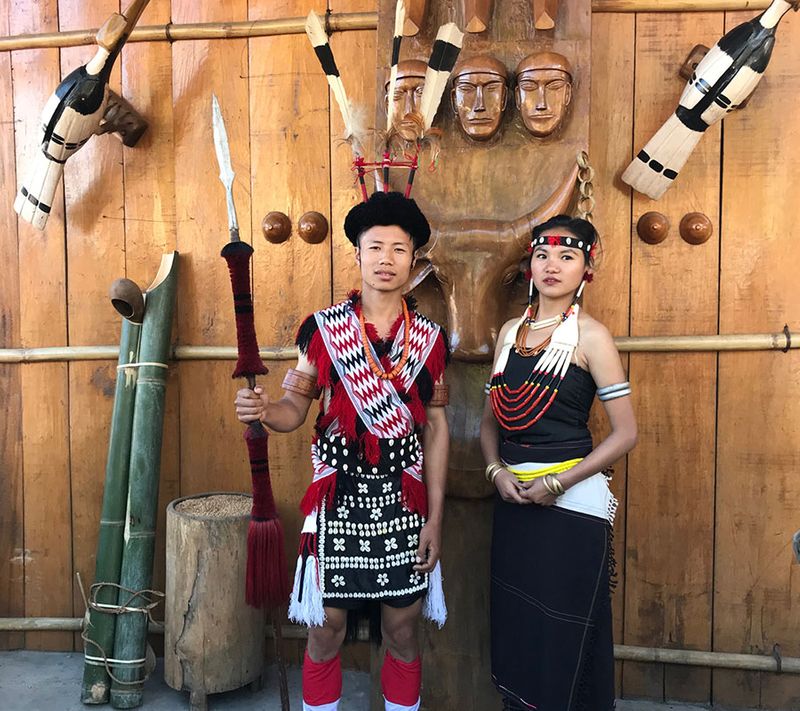
As the tribesmen and women gladly posed on a mere gesture of request, the exchange of smiles reinforcing itself as the universal language of communication, I seemed to have found my own Utopia right there. The days were spent watching various tribes perform their dances of war, farming, and celebrate their traditions, and then making them search for words and signs to explain a custom or a curiosity over a piece of jewellery (which they did without a frown and without a hurry in the world).
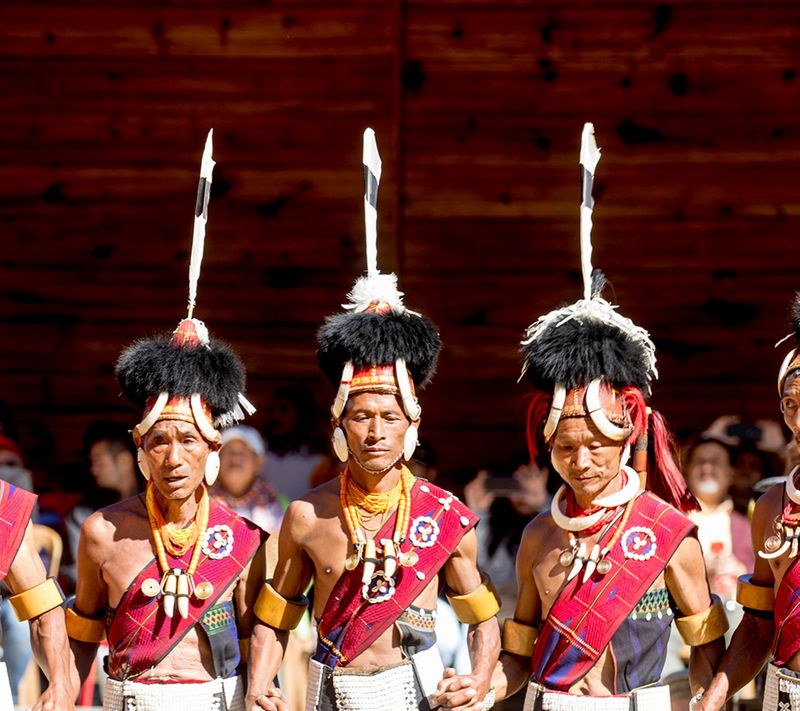
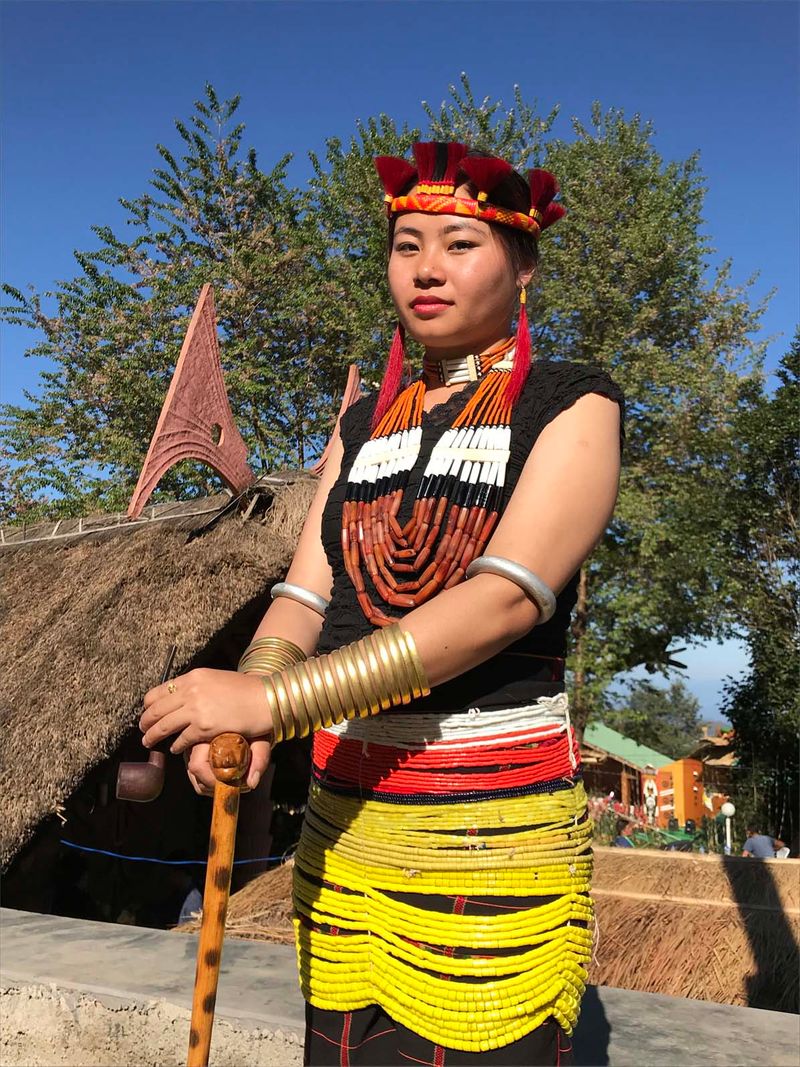
Every Naga tribe has a distinctive headgear and dress patterns and motifs that identify them and are proud symbols of their culture and life. The hornbill feathers, however, are common in many of their headgears. Traditionally, in the tribes like Ao, Angami, Sema, Rengma, Konyak, the number of hornbill feathers indicated the status of a warrior. In the Konyak tribe, only those men who have prevailed against an enemy could get a face tattoo, they told me effortlessly even if we didn’t have a common language. The Konyaks, in fact, were the last headhunters of Nagaland. They have a fierce history of headhunting and practised it into the 1960s till it was banned. With their warrior ways behind them, many such tribes took to farming as main occupation.
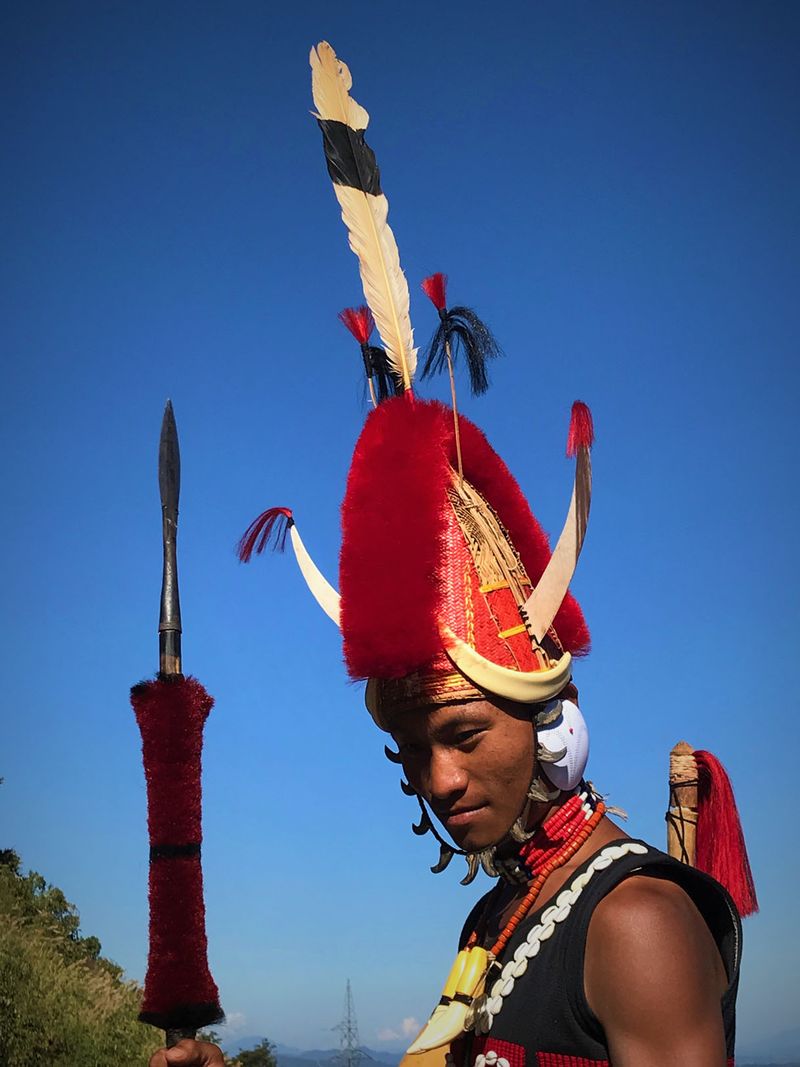
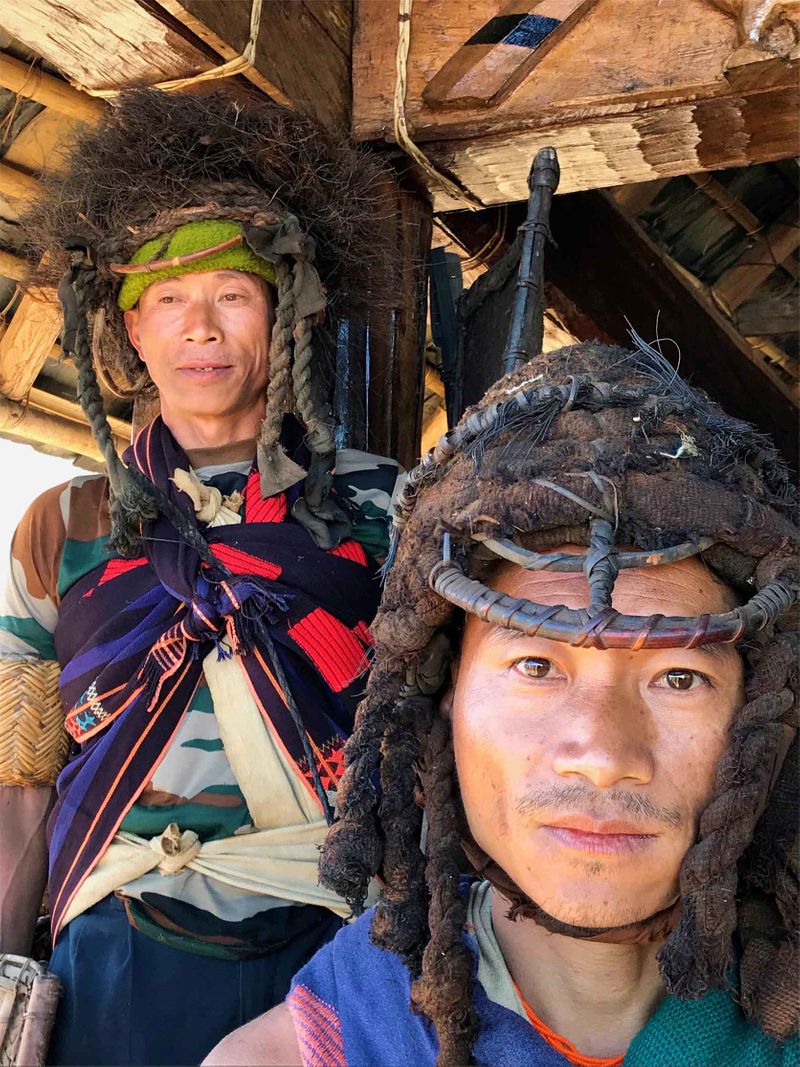
In Sumi tribe, one of the most aggressive, yet known for being simple, honest, and loyal, men stand apart in red with their round black headgears with feathers and warrior spears, while women are a pretty picture with the red akutsukukha (headgear) and tsukoli (earrings). If Zeliang circular headgers are a burst of colours, Khiamiungan’s are peculiar and rustic to the core with a netted woven look. The Kachari tribe breaks the red-white-black predominance in the attires with abundant use of yellow.
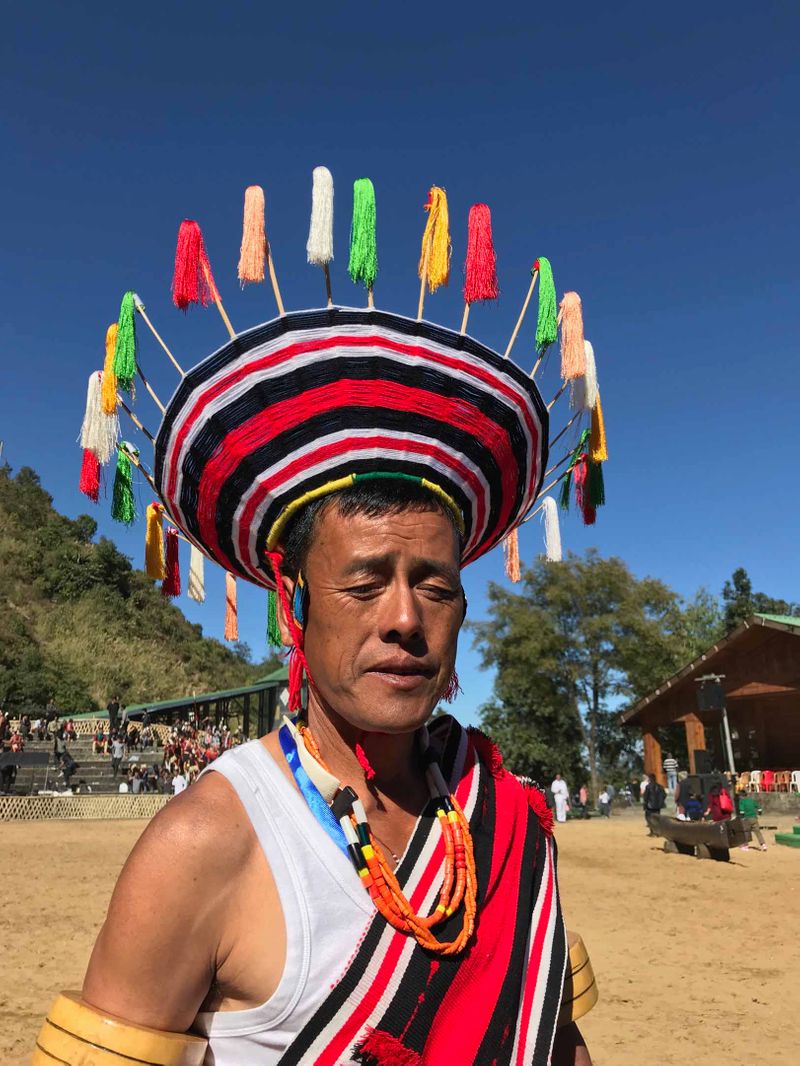

The legend of the Naga shawls

The most prominent item of a Naga dress is, however, the shawl. Every tribe has its distinct varieties and sub varieties. In the past, it was even possible to identify the tribe, social status, and the number of gennas (religious communal rituals) a tribesman had performed by simply looking at the shawl. Among the Changs, the unmarried boys’ and girls’ dress is called the Kaksi nei, while the newly married couple sport the Silang nei.
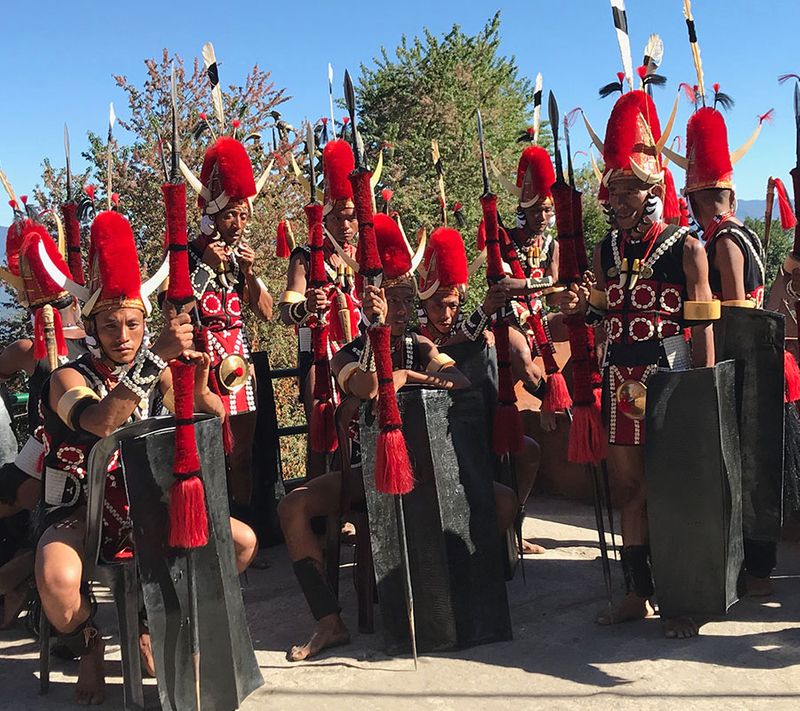
Legend has it that it all started with one Hosa of Yimchungru tribe. He grew aromatic plants and flowers in an area far from his village. But every morning, he would see that the flowers had been plucked. Determined to catch the culprit, he hid near the garden before dawn. He saw fairies merrily plucking flowers and tucking them into their resplendent shawls. In his attempt to catch them he could only manage to grab the end of the shawl of the prettiest one. The disrobed fairy, in return for her shawl, taught him how to weave the gorgeous shawls.
Make sure you pick one or two from the craft bazaar pavilion at the festival and match them with some colourful tribal earrings and neck-pieces.
Food, food everywhere
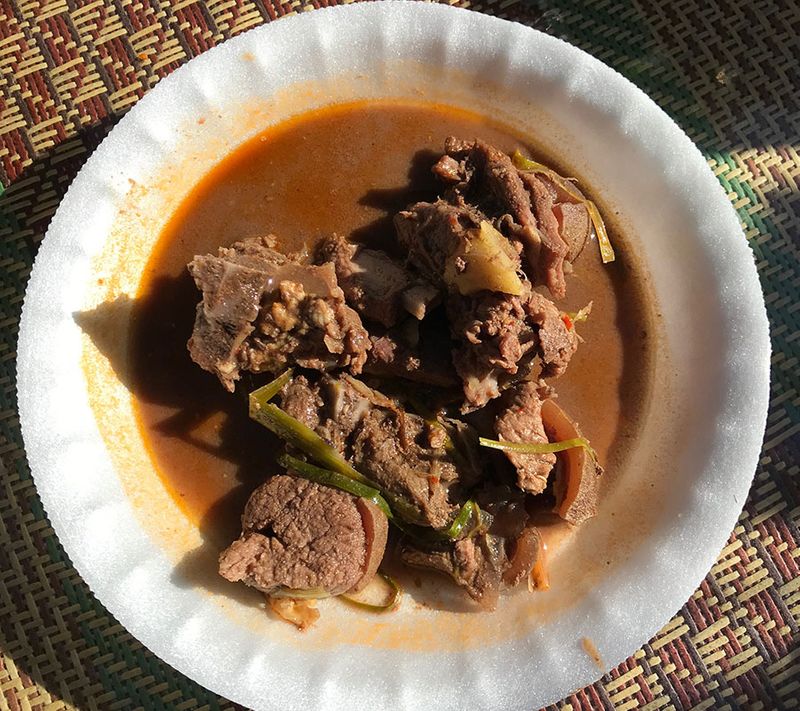
Though the assembly of various tribes of Nagaland was the high-point of the festival, the enchanting aromas coming from those open kitchens, big pieces of pork and other meat being smoked on firewood, could make you lose focus in a jiffy. So much so that, many times I quite nonchalantly chose the peaceful and delectable company of food over curiosity-raking sudden hullabaloos.
I even regularly rewarded the merest physical exercise with generous helpings of rice beer, smoked pork, pork with bamboo shoots, wild rice, sweetest of pineapples, and what not from various morungs and food stalls. I wonder if it was the music and the attires of the tribes that were more soulful or colourful, or the food?
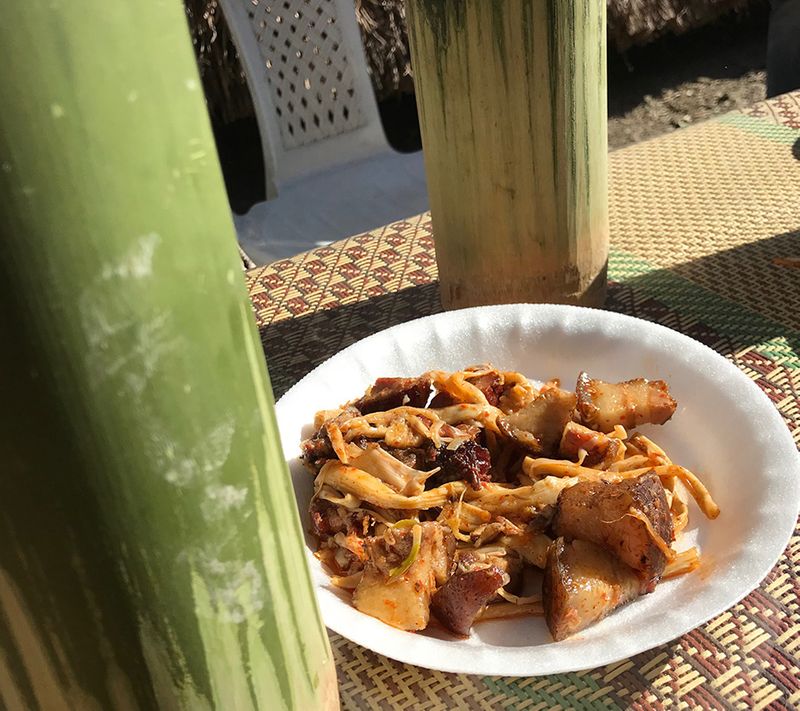
Must be the power of food and its soul-satisfying nature! As a non-tea aficionado in me instantly took to hibiscus, gooseberry, and other teas in black, red, and white, and also dumped coffee for Nagaland-special berries wines and green apple wines.
Musical nights
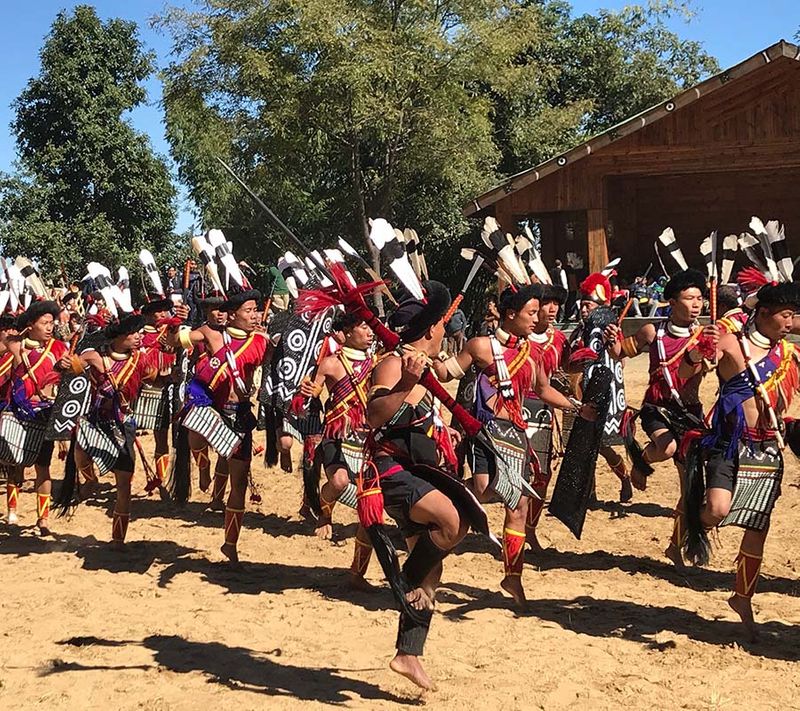
The dusk would promptly give way to nights of modernity at Kisama village. The rock concerts, the bands playing all the familiar songs that a generation or two have grown up on (the Beatles, Elvis, Bryan Adams’ forever ‘Summer of 69’, and so on), at the main ground made hours of cold nights become enjoyable rather than challenging. The gathering, with new-found friends then took the party to the common bonfire ground at the camp site, making one of the nights turn into an impromptu dance night with Hindi, English, Assamese, and other folk numbers.
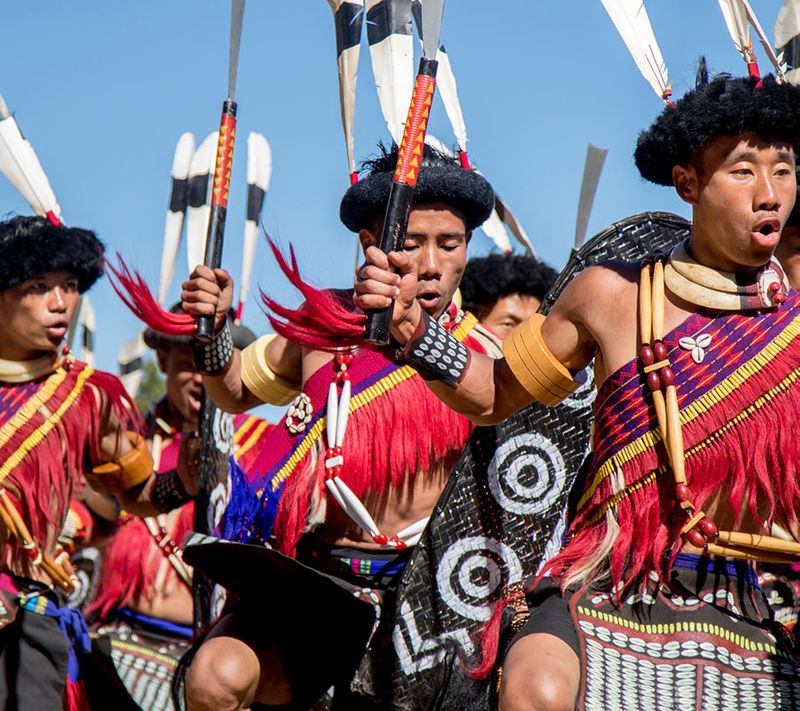
And, every night I went to sleep realising and understanding in totality why this was ‘the festival of festival’, only to wake up the next day to be happily surprised all over again.
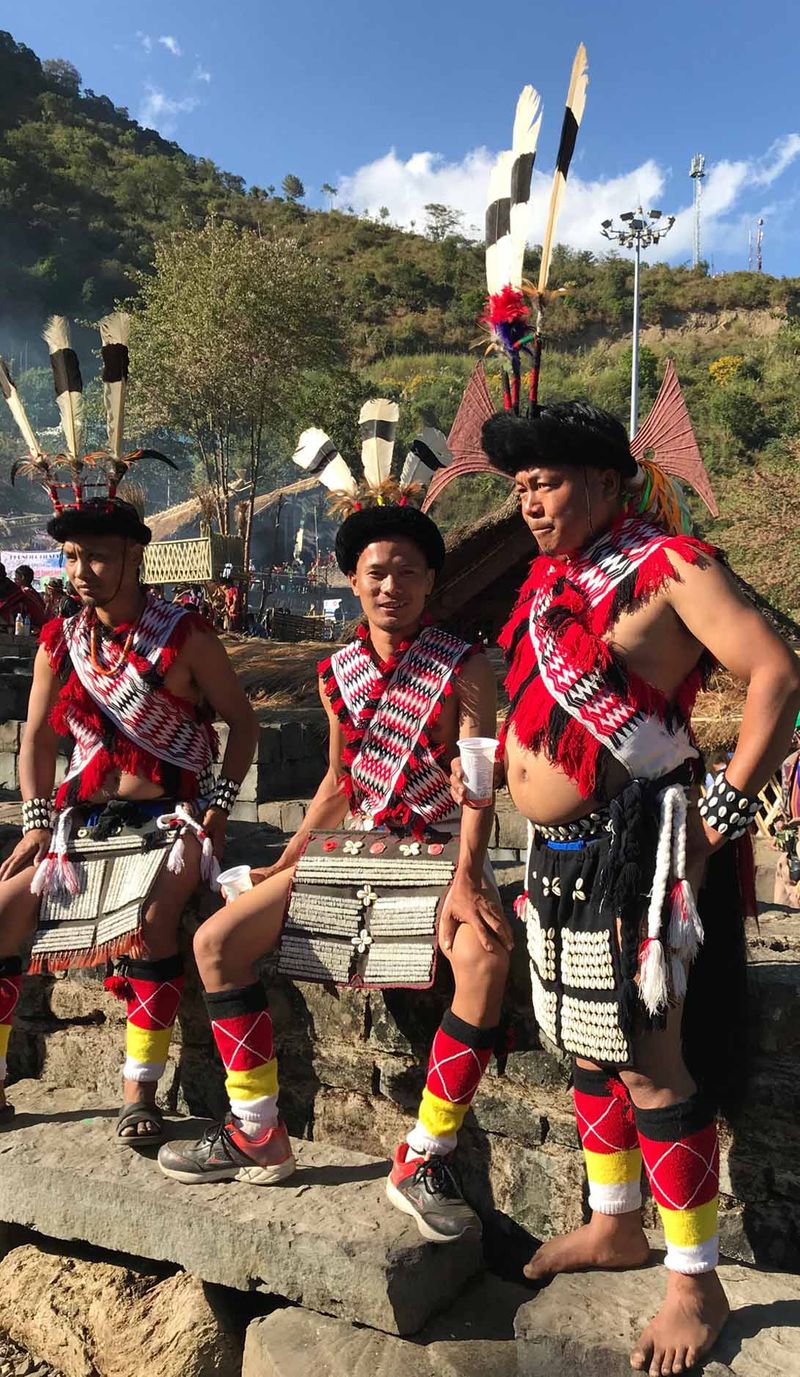
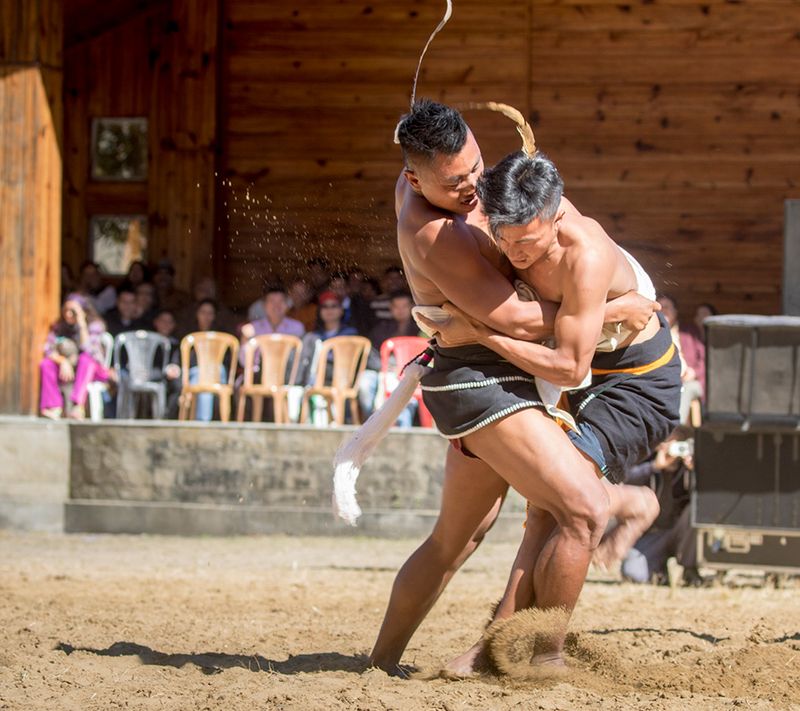
Note
- Domestic tourists must have an Inner Line Permit (ILP) for entry into Nagaland. This can be applied and obtained from the Nagaland government's official website.
- Kohima is easily accessible by road. One can also reach Dimapur by air or rail, then take the road to Kohima.


